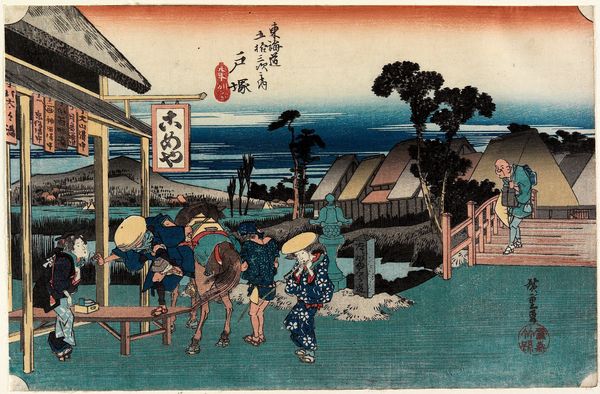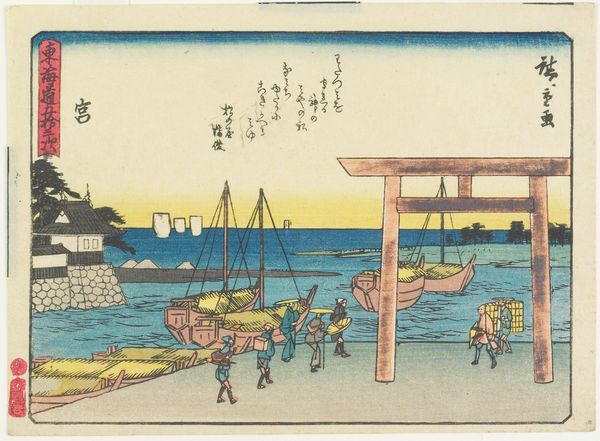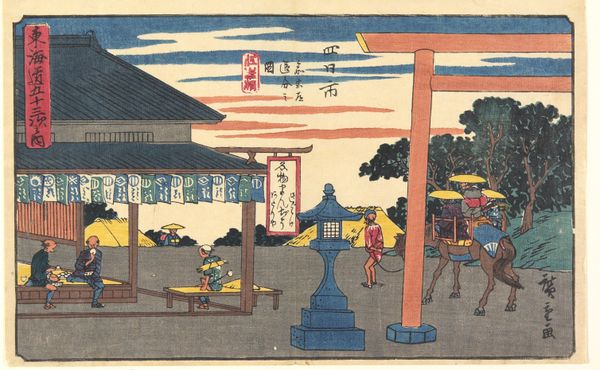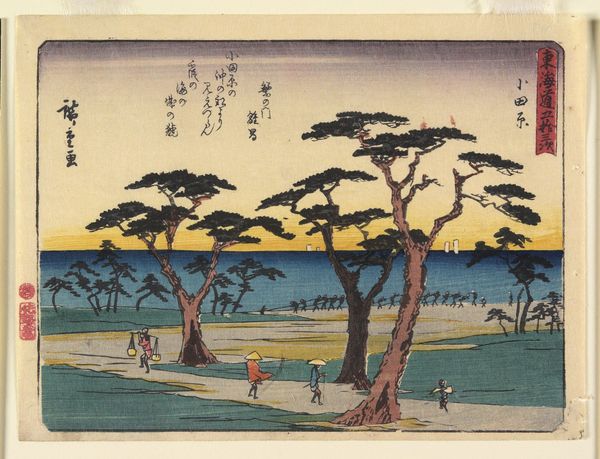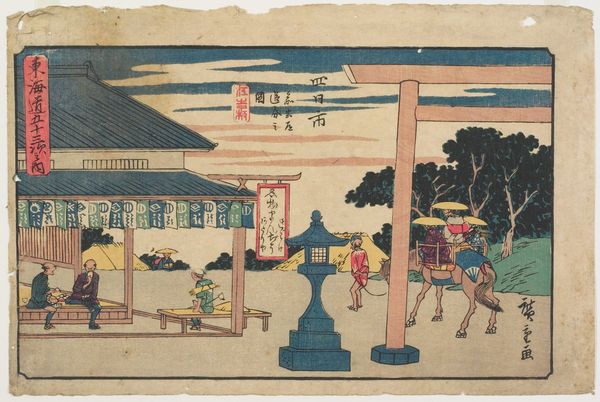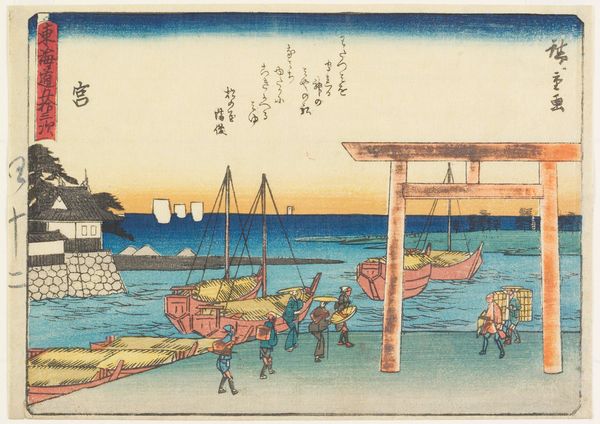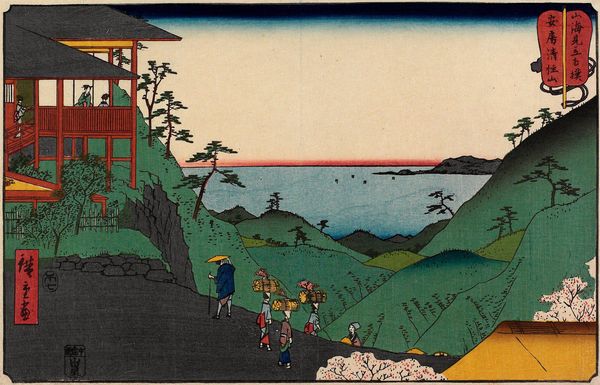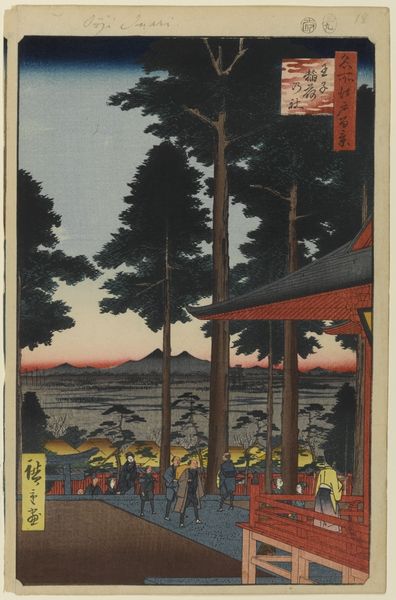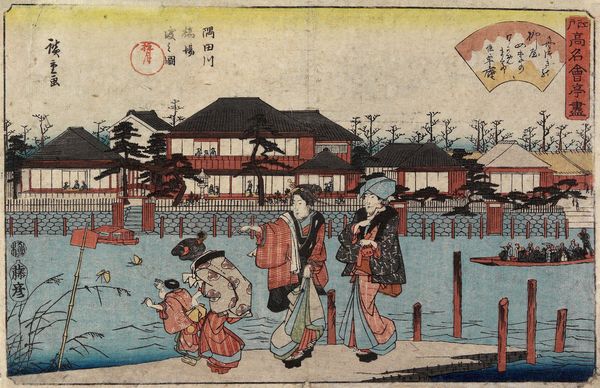
print, intaglio, paper, ink, woodblock-print, woodcut
# print
#
intaglio
#
asian-art
#
landscape
#
ukiyo-e
#
paper
#
ink
#
coloured pencil
#
woodblock-print
#
woodcut
#
orientalism
Dimensions: 7 11/16 x 12 3/8 in. (19.6 x 31.5 cm) (image)8 3/8 x 12 11/16 in. (21.2 x 32.3 cm) (sheet)
Copyright: Public Domain
Editor: So this is “The Fork of Akiba in Kakegawa,” a woodblock print made by Utagawa Hiroshige sometime in the 1840s. It has a kind of serene, yet busy, quality, with the landscape in the background and then these figures in the foreground who seem to be working very hard. What symbols or meanings jump out at you? Curator: My eyes are immediately drawn to the Torii gate. Notice how it dominates the composition, acting as a portal. In Shinto, Torii gates mark the entrance to sacred spaces. Its presence here, combined with the travelers, speaks to the deeply rooted cultural practice of pilgrimage, but beyond that, what emotional connection do you feel towards it? Editor: I guess it feels kind of welcoming, even though it’s a pretty simple structure. The way it frames the landscape draws you in. The gate stands for transition but also arrival, like a symbolic threshold between two states. Curator: Precisely! Think of the gate not only in terms of physical space, but also the psychological space of the journey. Hiroshige is really playing with how we, as viewers, enter the scene – almost as if we're beginning our own journey. What about the figures, what feelings do you think they convey? Editor: They seem very burdened, like everyday folk on their daily treks, a real slice of life for that time. Even the colours seem purposeful; the bright blues in the sky are very distinct and stand out against the softer shades. Curator: Notice the contrast – the ephemeral beauty of the sunset juxtaposed with the tangible, grounded reality of the laborers. Consider this contrast within the context of ukiyo-e, “pictures of the floating world,” designed for mass consumption. It speaks to an evolving culture where art democratized the experience of travel and the appreciation of beauty in ordinary life, what lessons do you feel it gives for us today? Editor: It really emphasizes the universal experiences we all share even today. Thanks, this has given me so much to think about. Curator: And for me too, this analysis underlines how we relate and perceive what the image gives to us, in a personal capacity.
Comments
No comments
Be the first to comment and join the conversation on the ultimate creative platform.
